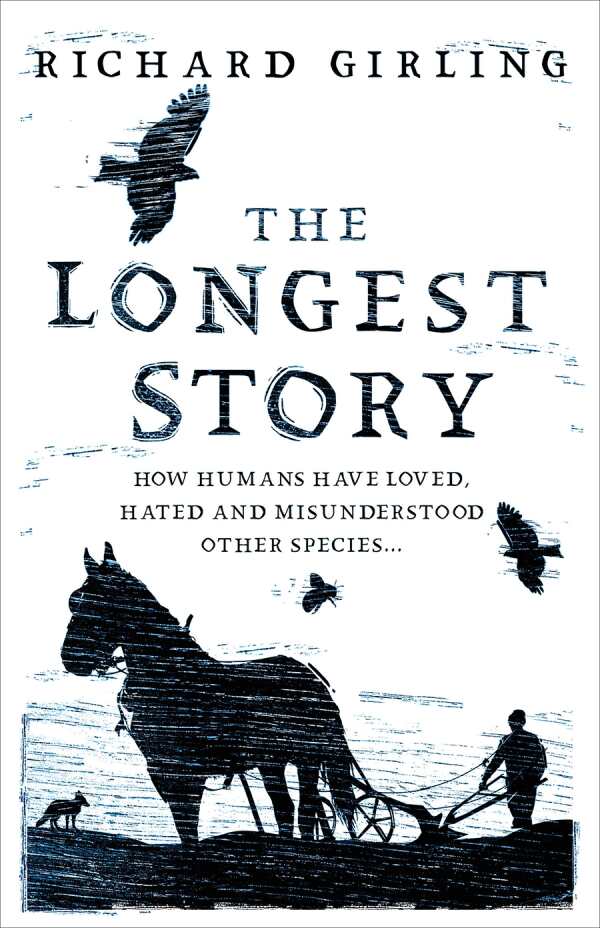The Longest Story
How Humans Have Loved, Hated and Misunderstood Other Species
Richard Girling’s The Longest Story is a social science examination of the relationships between humans and animals—a topic that’s seldom considered, but is close at hand and environmentally relevant.
To varying degrees, human proximity to animals has tended to result in conflicted, vexing, or loving relationships. This intriguing history of those relationships, which covers symbiosis, predation, and apathy, comes via linked essays. These cover ancient civilizations, the rise of Christianity, the advent of environmental conservation, and the destruction of deforestation.
The book’s chronological parts cover historical eras, featuring the kinds of people who dominated then, like hunters, thinkers, and geneticists. They hint at such people’s views of animals, showing that shifting human roles indicate that it’s people who have changed, not animals. Even as the book dispels the notion that human-animal relationships have always been as they are now, it indicates that they are likely to change in the future, too. The personas of “savior and slaughters” may characterize humans’ polarized role now, but they also serve as an implicit call to action, to pick a side.
With succinct diction and strong imagery (the book encapsulates human evolution with “Arms shorten, legs lengthen, necks stretch”), this is a book that is mythic in scope and style. Beginning with images of humans and animals walking together, it works toward a stunning conclusion about where humans should look for wisdom: “It is to those who swing above us in the trees.”
The text invites contemplation on how humans and animals can right what is wrong in the environment and live in harmony without becoming utopian: there’s much work to be done, Girling knows, and some damage can never be undone. The Longest Story is an enlightening nature book about the complex relationships between animals and humans.
Reviewed by
Melissa Wuske
Disclosure: This article is not an endorsement, but a review. The publisher of this book provided free copies of the book to have their book reviewed by a professional reviewer. No fee was paid by the publisher for this review. Foreword Reviews only recommends books that we love. Foreword Magazine, Inc. is disclosing this in accordance with the Federal Trade Commission’s 16 CFR, Part 255.

